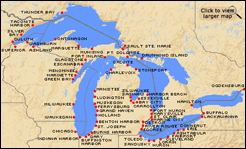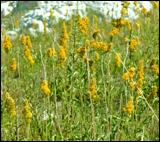Natural Vegetation

The Mixedwood plains region in Canada used to be full of trees and different variety of plants. A very small portion of the trees we used to have still remains in this region anymore, however. Many years of agriculture and forestry significantly reduced the vast forests we used to have. A portion of whatever is left of the trees, especially the endangered species, is being kept in different restricted areas in Canada. Some areas near the Great Lakes though, are still being used for primary industries.

Still, there are a variety of different plants found in the Mixedwood plains right now. This happens because the soil and the weather are suitable for these types of plants. The mixed wood ecozone is near large bodies of water- the Great Lakes. Warm air coming form the Gulf of Mexico creates a relatively mild atmosphere for the plants. Regions in the mixed wood plains receive ample amounts rainfall annually. The soil in the mixed wood plains is extremely fertile and productive. Conditions vary in different places in the mixed wood plain but these varying conditions also create diversity in these Canadian plants.

Different trees could be found in southern part of the Mixedwood plains. Some coniferous include white and red pine, eastern hemlock, the common black spruce and eastern red cedar.

There are many more types of deciduous trees in this ecozone. Different types of oak, elm, and birch are some of the deciduous trees found all over this region. Some other trees include black walnut, butternut, eastern cottonwood, balsam popular, basswood, black ash and blue ash. Finally, some types of tulip trees, sycamore, shagbark hickory, bitternut hickory, red mulberry and the Kentucky coffee-tree could only be found in southern regions where the weather is warmer.
Apart from the trees, there are also several types of fauna and wildflowers in the Mixedwood plains. The remaining wetlands in the Mixedwood plains are home to several types of exotic plants. Clovers, golden rodís, and wild raspberry are some common wild flowers found in the Mixedwood plains.
A Joshua Liu and Timothy Yip Production 2003-2004
|
